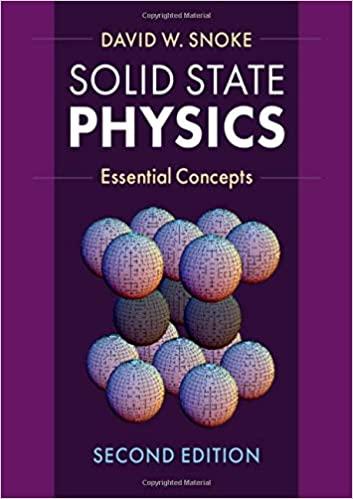It is worthwhile to consider to what degree it is valid to treat different scattering processes in
Question:
It is worthwhile to consider to what degree it is valid to treat different scattering processes in a single resistor as a series circuit of resistors. Consider a standard resistor in which the electrons have two main scattering processes: Scattering with defects, and scattering with crystal vibrations. The scattering with defects has a scattering time τd given approximately by
where nD is the density of defects, σD is the cross-sectional area of the defects, and v̄ is the average velocity of the electrons. The scattering with crystal vibrations has a scattering time τp given approximately by (ignoring Pauli statistics)
where n(T) is the density of phonons according to the Planck equation, and σp is the cross-section for scattering of electrons with phonons. The total scattering rate is equal to the sum of the two scattering rates:
The problem with this approach is that the average electron velocity v̄ can depend on the voltage drop felt by the electrons, so we should write v̄(ΔV). At low field, the average velocity v̄ due to the thermal motion of the electrons is much higher than the extra velocity they get from acceleration due to the voltage drop, and so v̄ can be taken as independent of ΔV. For very fast acceleration of the electrons in high electric field, however, their average velocity can be significantly affected. The effective cross-section for both defect scattering and phonon scattering can also depend on the electron velocity, which depends on the voltage drop. Show that accounting for these effects leads to voltage-dependent resistances and a breakdown of the series model for the resistance in the GMR effect.
Step by Step Answer:






